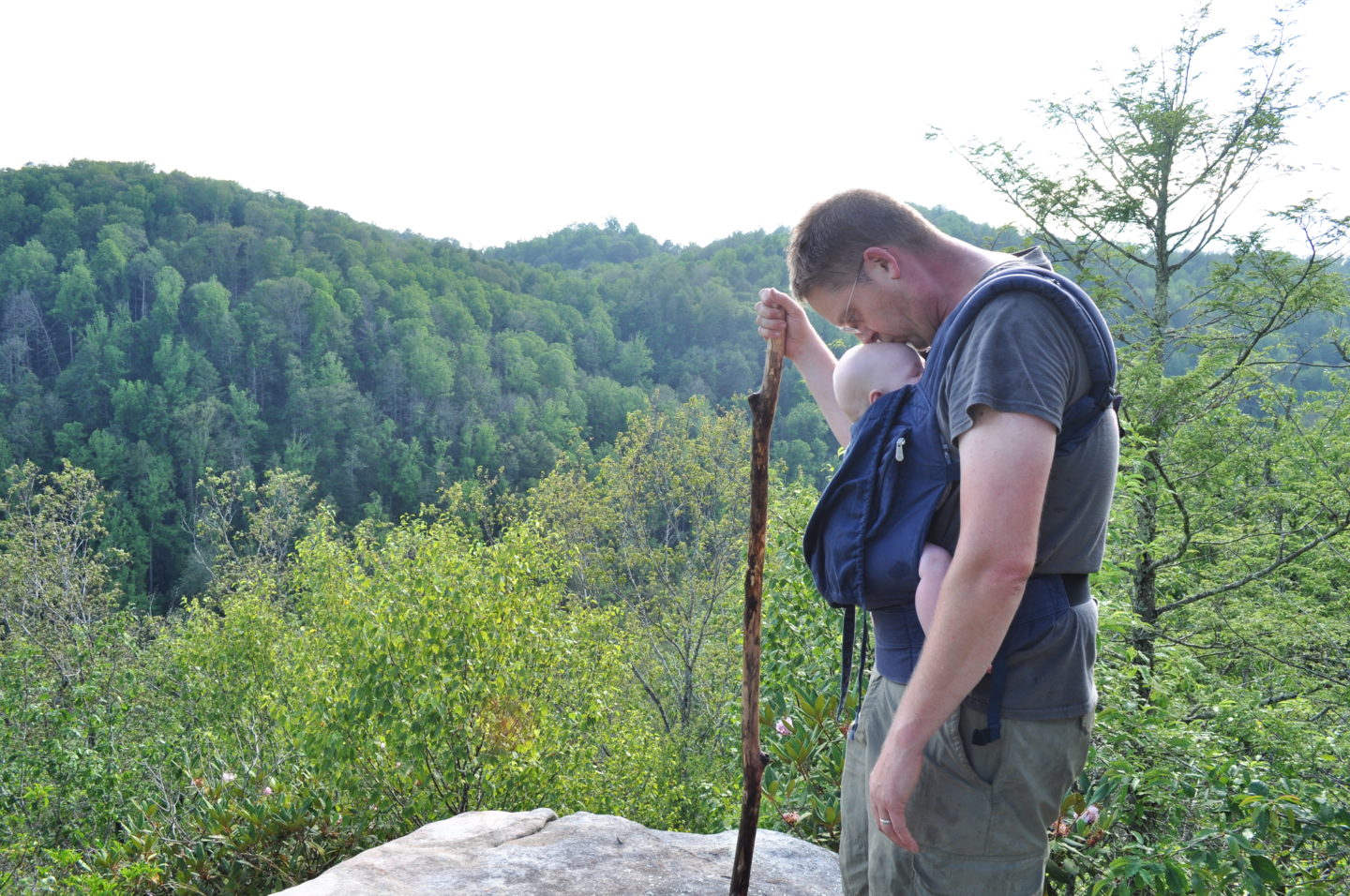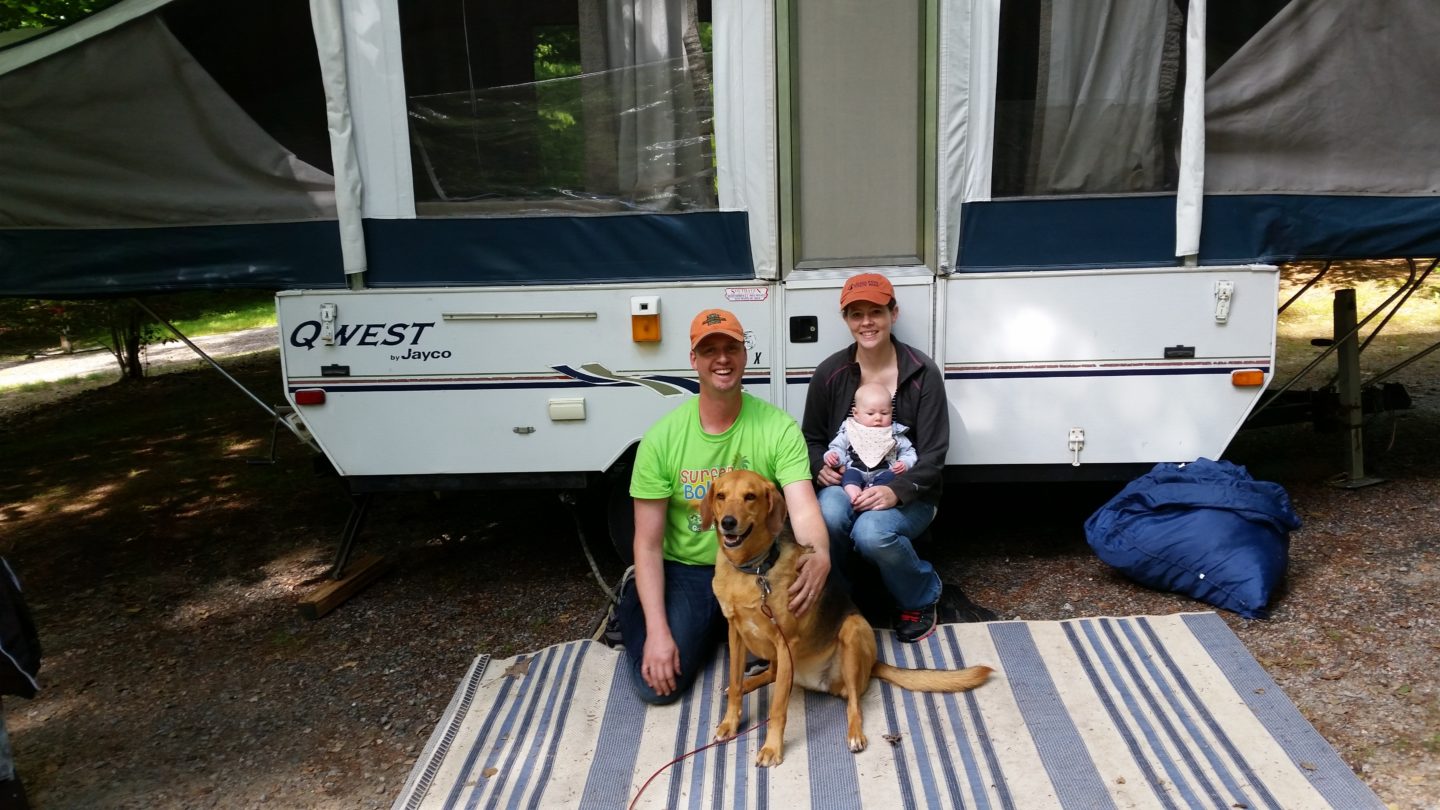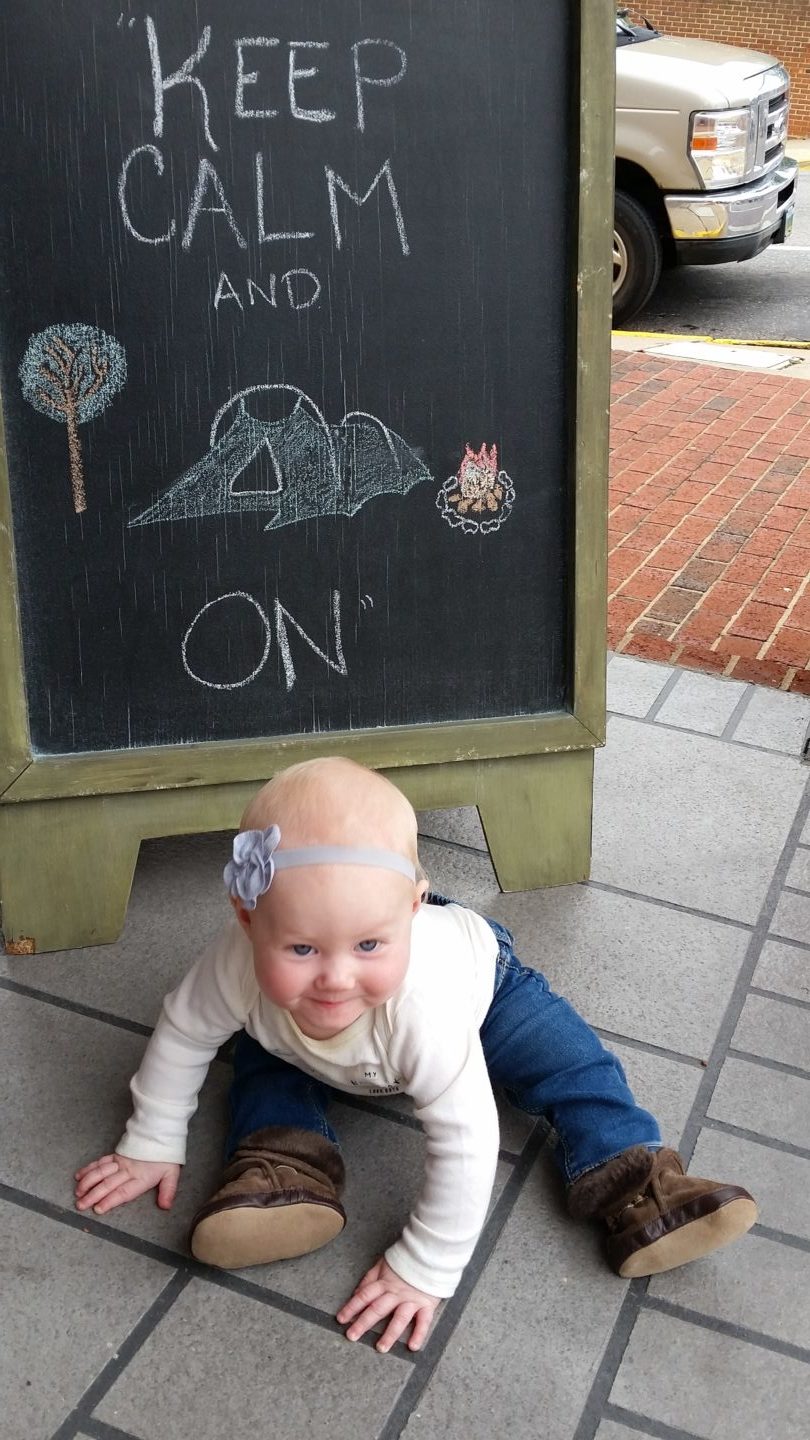10 Tips for Camping with an Infant
Shortly after our daughter was born, we splurged and invested in a used pop-up camper, setting a goal of camping once a month during the season. That first year, we learned some valuable things about camping with an infant, applicable whether you’re in a tent, pop-up or RV.

Tips for Camping with an Infant:
1. Getting there is half the battle with a baby. Start by exploring nearby camping sites. We mostly stayed within 3-4 hours of home and still enjoyed a variety of places.
2. Leave plenty of time for diaper changes, nursing sessions, the unexpected, on your drive. Most babies get hungry, need to be changed, or simply need a break from the car seat every two to three hours.
3. Leave right before nap time and keep an arsenal of toys ready to entertain your little one!
4. Bring a play yard. We used a Pack ’N Play for our daughter to sleep in, avoiding any concerns about her managing to wiggle off of the bed. During the day, we stowed it on one of the beds to keep it out of the way without having to fold it up.
5. A play yard comes in handy for more than just nighttime. When you first arrive at camp, your little one likely won’t want to be in the car any longer, so set up your play yard first (make sure it’s easily accessible before you leave home), place it in the shade (or cover it with a sheet for shade), and use a mosquito net to protect against bugs if necessary. This allows your baby to watch you and leaves your hands free to set up camp.

6. The play yard can also be used to keep baby safe and your hands free while cooking over the fire!
7. Pack minimally, but not too minimally. You don’t need every single thing you use at home, but it’s also not convenient to run out of clothes or diapers. Bring a small bottle of detergent and a clothesline if you want to wash and reuse (take humidity into consideration though!). Pay attention to what you actually use.
8. Look at the forecast and consider your temps. Babies' bodies don’t regulate temperature like adults'. Are you camping at the beach? Bring cool-weather clothes and plan to spend the hottest part of the day indoors. Going to the mountains where temperatures fluctuate throughout the day? Layers - lots of layers. Need warmth for nighttime but baby isn’t old enough for blankets? Bring multiple sleepers to layer and a thick sleep sack, along with a knit hat and socks for both feet and hands.

9. Other things to throw in: Multi-use burp cloths, a sun hat, sunscreen (when your pediatrician gives you the okay to use it), baby carrier, a Rubbermaid or similar bin for bathing, and a Bumbo or other infant seat if your baby is eating solids. (The Bumbo can double as a dog bowl. Guess how I know?)
10. Most of all, have fun! You may be surprised how much even a young infant will enjoy camping! Our daughter noticed the chirping of the birds, was mesmerized by campfires and loved the sand in her toes. Of course, she adored hiking! What about you - do you have any tips or tricks to camping with a baby? What were your experiences?
This post is sponsored by Easy Camp. At Easy Out Camp Inc., we are passionate about camping and we believe that everyone should experience the enjoyment of living outdoors at least once in their lifetime. We want to make the outdoors easy for everyone – a fun, vibrant environment in which to enjoy the freedom of life. And our aim is to play the fullest role in making a fantastic camping experience that creates great memories – including developing an exciting online community where you can meet new friends and find inspiration and advice. Easy Out Camp Inc.– “Just Add People.” More information is available at www.easycamp.com
ABOUT OUTGROWN
OutGrown is a 501(c)(3) nonprofit that works to create a world where everyone can enjoy the physical and mental benefits of spending time outside. We are focused on creating opportunities and removing barriers to access so families with babies and young children can take their first steps outside. We believe all families have the right to connect with nature, benefit from spending time outdoors and be inspired to a lifelong love of nature. Since its grassroots inception in 2013, OutGrown is a growing community of 280,000 families and over 300 volunteer Branch Ambassadors. More information on all of our programs can be found at WeAreOutGrown.org
EDITORS NOTE:
We hope you enjoyed reading this article from OutGrown. We’re working hard to provide our community with content and resources that inform, inspire, and entertain you.
But content is not free. It’s built on the hard work and dedication of writers, editors, and volunteers. We make an investment in developing premium content to make it easier for families with young children to connect with nature and each other. We do not ask this lightly, but if you can, please make a contribution and help us extend our reach.
Related Content




Comments